Ever feel like your skis are working against you instead of with you? Long skis might be the culprit. They’re harder to control, especially for beginners, and can turn a fun day on the slopes into a frustrating workout. The good news? Shorter skis are here to save the day. They’re easier to handle, quicker to learn on, and way more portable.
Why Switch to Shorter Skis?
- Control: Easier to turn and stop, even in tight spaces.
- Faster Learning: Perfect for beginners to build confidence.
- Portability: Fits in a backpack - no roof racks needed.
- Comfort: Less strain on your knees and joints.
- Versatility: Works on slopes, trails, and even your backyard.
- Cost: Starting at $150, they’re budget-friendly compared to full ski setups.
Snowfeet: A Top Choice for Short Skis
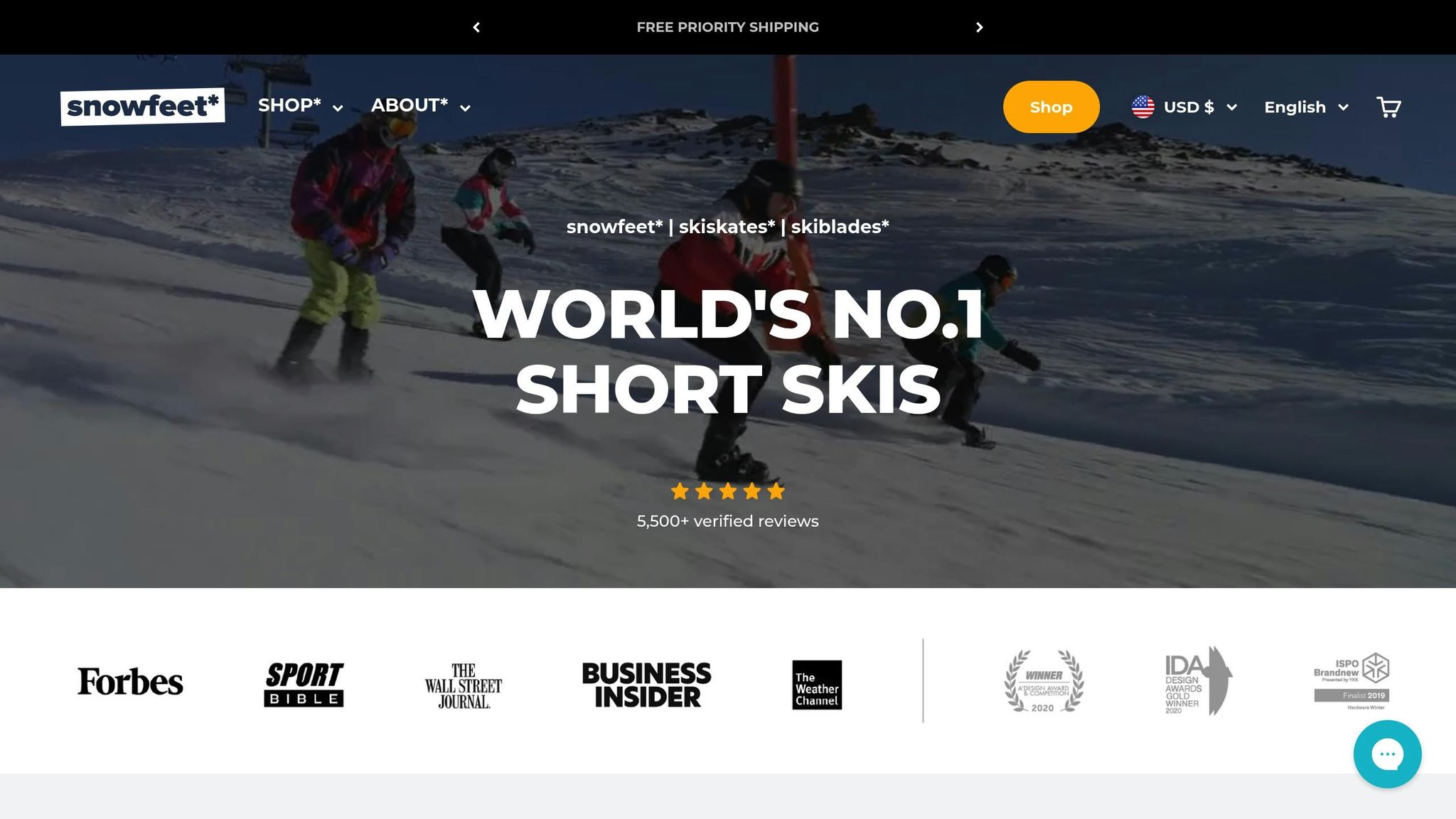
Snowfeet offers models from 15 to 47 inches, designed for everyone from beginners to advanced riders. Plus, they work with regular winter boots - no need for pricey ski boots. Whether you’re hitting groomed slopes, tackling powder, or just playing in the snow, there’s a Snowfeet model for you.
Ready to ditch oversized skis and enjoy a smoother, more fun ride? Short skis might just be your new best friend. :)
Short Skis vs. Long Skis
How Shorter Skis Improve Your Experience
Switching to shorter skis can make your time on the slopes more enjoyable by giving you better control, easier portability, and greater comfort. Let’s break down why shorter skis - like Snowfeet* models - are a game-changer for winter sports enthusiasts.
Main Benefits of Shorter Skis
Better Control and Maneuverability
Shorter skis make it easier to navigate tight spaces, execute quick turns, and come to a stop - even in busy areas. They respond to small movements, giving you the confidence to ski precisely, especially if you’re still learning the ropes. It’s like trading a bulky SUV for a zippy little sports car - everything feels smoother and more responsive.
Quicker Learning Curve
Shorter skis are less intimidating and let you focus on mastering technique instead of wrestling with oversized gear. Many skiers find they can pick up basic skills like turning and parallel skiing much faster compared to using traditional long skis. This makes them a great choice for skiers of all experience levels, whether you’re a total newbie or just looking to refine your skills.
Easier to Transport
One of the biggest perks of shorter skis is how compact they are. For example, Snowfeet* Mini Ski Skates are only 15 inches long, small enough to slip into a backpack. Even the longer models are far easier to carry and store than their traditional counterparts. No need for roof racks or oversized ski bags - just toss them in your car or closet and you’re good to go.
Less Physical Strain
Long skis put a lot of pressure on your knees and joints, which can cut your day short. Shorter skis reduce that strain, letting you ski longer without feeling worn out. Your legs will thank you, and you’ll leave the slopes feeling energized instead of completely drained.
More Versatility
Unlike traditional skis that require groomed slopes, shorter skis work almost anywhere there’s snow. From hiking trails and backyards to terrain parks, they adapt to a variety of conditions. Plus, they pair with regular winter boots, so you’re not locked into expensive ski-specific footwear.
Affordable Entry Point
Skiing can be an expensive hobby, but shorter skis lower the financial barrier. A full setup of traditional skis, boots, bindings, and poles can easily cost $800 to $1,500 or more. In contrast, shorter options like Snowfeet* start at $150 and work with the winter boots you already own. It’s a budget-friendly way to hit the slopes without breaking the bank.
Side-by-Side: Long Skis vs Short Skis
Here’s how traditional long skis stack up against shorter alternatives like Snowfeet*:
| Feature | Traditional Long Skis (Rossignol, K2, Salomon) | Short Skis (Snowfeet*) |
|---|---|---|
| Control | Harder for beginners, needs advanced skills | Easy to control, very responsive |
| Learning Speed | Takes weeks or months to get the hang of | Learn basics in just days |
| Transport | Bulky, needs roof racks or ski bags | Compact, fits in a backpack |
| Boot Requirement | Must buy ski boots | Works with regular winter boots |
| Physical Demand | High stress on knees and joints | Lower strain, less fatigue |
| Terrain Options | Limited to ski slopes | Works on slopes, trails, parks |
| Storage Space | Needs a garage or large closet | Fits in small closets |
| Total Cost | $800-1,500+ for full setup | $150-690 depending on model |
The differences are clear. Traditional skis are built for speed and performance, which is great if you’re racing. But for most recreational skiers, shorter skis are all about having fun. They’re easier to handle, more versatile, and much more affordable.
Shorter skis aren’t just a passing trend - they’re a return to the roots of skiing: enjoying the snow without wrestling with your gear. If you’ve been looking for a way to make winter sports simpler and more enjoyable, shorter skis might be just what you need.
Snowfeet*: The Short Ski Solution
Snowfeet* takes the concept of shorter skis and turns it into a game-changer for winter sports. By blending fun, freedom, and ease of use, they’re breaking away from traditional skiing norms. With Snowfeet*, you get more control, less hassle, and a whole new way to enjoy the snow.
What Makes Snowfeet* Stand Out
Works with Any Winter Boots
Forget about clunky, specialized ski boots. Snowfeet* is compatible with whatever winter boots you already own - whether they’re snow boots, hiking boots, or snowboard boots. Just strap in and you’re ready to go.
Compact and Portable
Snowfeet* products are designed to go wherever you do. The Mini Ski Skates, for example, are just 15 inches long and weigh a few pounds. They’re small enough to fit in a backpack or carry-on, making them perfect for spur-of-the-moment snow trips or easy storage when space is tight.
Quick and Easy to Learn
No need to book pricey lessons or spend hours figuring things out. The shorter length and responsive design of Snowfeet* products mean you’ll find your balance and start having fun almost immediately.
Versatile Across Terrains
Whether you’re on ski slopes, snowy hiking trails, your backyard, or even a terrain park, Snowfeet* adapts to a variety of snow-covered surfaces. It’s all about versatility.
Lightweight Build
Traditional skis can weigh you down with heavy boots, bindings, and poles. Snowfeet* offers a lighter setup, which helps reduce fatigue and makes it easier to maneuver.
Models to Match Every Rider
Snowfeet* has something for everyone, from beginners to seasoned skiers. Here’s their lineup:
For Beginners
- Snowfeet Mini Ski Skates (15 inches) – $150: Great for first-timers and perfect for hiking adventures.
- Snowfeet PRO (20 inches) – $199: Offers adjustable bindings and comes in multiple colors, adding a touch of style and performance.
For Intermediate Riders
- Skiskates (17 inches) – $390: Built with a wood core for extra stability and control, these are ideal for ski slopes while keeping the fun factor of short skis.
For Advanced Users
- Skiblades (26-inch and 39-inch) – $450 and $490: These models give you the perks of longer skis without sacrificing agility.
- Snowfeet POWDER (39 inches) – $490: Specifically designed for deep powder, making them a must-have for powder enthusiasts.
For Maximum Performance
- Snowfeet Short Skis (47 inches) – $690: These combine the power of traditional skis with the control and maneuverability of shorter designs.
No matter which model you choose, all Snowfeet* products share the same core benefits: they work with regular boots, are more portable than traditional skis, and prioritize fun and accessibility. Whether you’re testing the waters as a beginner or looking for something fresh as an experienced skier, there’s a Snowfeet* option for you.
Snowfeet* isn’t trying to outdo traditional ski brands - they’re carving out their own niche. Their mission? To make winter sports more enjoyable and accessible for everyone. They even have their sights set on getting skiskating into the Olympics. With Snowfeet*, the future of winter sports looks shorter, lighter, and way more fun.
sbb-itb-17ade95
Snowfeet* vs Traditional Skis and Snowboards
Traditional skis and snowboards often come with bulky, specialized gear and a hefty price tag. On the other hand, Snowfeet* products are lightweight, portable, and easy to use. Thanks to their shorter length, they offer better control, making them a great alternative for anyone looking to simplify their time on the slopes. Let’s break down how Snowfeet* compares to traditional options.
Traditional skis are usually over 60 inches long and require specific boots and bindings. Snowfeet*, however, range from 15 to 47 inches and can be used with any standard winter boots. This makes them much easier to carry and store, giving them an edge in convenience.
Which Option Works Best for You
Here’s a closer look at how Snowfeet* and traditional gear stack up, depending on your needs.
Snowfeet* might be your go-to if you’re looking for:
- A quick and easy learning experience
- Gear that fits in a backpack or car
- The ability to ski on multiple surfaces, not just groomed trails
- An affordable way to enjoy winter sports
- More time having fun and less time dealing with heavy equipment
That said, traditional skis and snowboards still shine in high-performance situations. If you’re into competitive racing, tackling steep backcountry runs, or carving at high speeds, their longer length and specialized design provide the stability and precision you’ll need.
Traditional skis and snowboards are better for:
- Professional or competitive skiing and snowboarding
- Deep powder and extreme backcountry adventures
- High-speed carving on steep, groomed slopes
- Organized races or freestyle competitions
Snowfeet* excel for:
- Beginners who want to learn quickly
- Casual skiers who prioritize fun over technical performance
- Travelers who need compact, portable snow gear
- Anyone tired of lugging around heavy, complicated equipment
- Families looking for budget-friendly, easy-to-use winter sports gear
Complete Comparison Chart
| Feature | Snowfeet* | Traditional Skis | Snowboards |
|---|---|---|---|
| Length | 15–47 inches | Over 60 inches | Around 59–65 inches |
| Boot Requirement | Any standard winter boots | Specialized ski boots | Specialized snowboard boots |
| Learning Curve | Quick and beginner-friendly | Steeper learning curve | Moderate learning curve |
| Portability | Fits in a backpack | Needs a ski bag or roof rack | Board bag or roof rack |
| Price | $150–$690 | Higher overall investment | Higher overall investment |
| Storage | Compact - fits on a closet shelf | Requires more storage space | Moderate storage needs |
| Rental Options | Limited | Widely available | Widely available |
| Maintenance | Minimal upkeep | Regular waxing and tuning | Regular waxing and tuning |
Snowfeet* offers a fresh approach to winter sports, making them a great choice for beginners and casual enthusiasts. Meanwhile, traditional skis and snowboards remain the top pick for seasoned pros and thrill-seekers who demand high performance.
How to Pick the Right Snowfeet* Model
Choosing the perfect Snowfeet* model is straightforward with seven options ranging from 15 to 47 inches in length. These shorter skis change the game for winter sports, offering better control and ease of use. Each model has its own unique features, so let’s break it down to help you find the one that fits your needs.
All Snowfeet* Models Explained
With prices starting at $150, Snowfeet* offers a variety of models that balance performance and cost, catering to different skiing styles and skill levels.
- Snowfeet Mini Ski Skates (15 inches) – At $150, these are the most compact option. They work with any winter boots and are small enough to fit in your backpack. Perfect for beginners or casual use on groomed slopes, sledding hills, or even your backyard.
- Snowfeet PRO (20 inches) – Priced at $199, this model offers adjustable bindings and a tougher build. It’s still beginner-friendly but provides better stability for those looking to step up their game.
- Skiskates (17 inches) – At $390, these come with a professional-grade wood core, making them ideal for groomed snow. They’re designed for playful skiers who enjoy tricks, jumps, and that "skating on snow" feel.
- Skiblades (26 inches) – Starting at $450, these strike a balance between control and versatility. They’re great for carving and can handle light powder up to 4 inches deep. Longer than the Skiskates, they offer better stability while staying portable.
- Skiblades (39 inches) – At $490, these are tailored for more advanced skiers. They handle powder better than shorter models and are versatile enough for varied terrain while still being easy to transport.
- Snowfeet POWDER (39 inches) – Also priced at $490, this model is specifically designed for deep powder. They deliver excellent float and control without the bulk of traditional powder skis.
- Snowfeet Short Skis (47 inches) – At $690, these are the longest in the lineup. They provide a skiing experience closer to traditional skis while maintaining portability and ease of use, making them a great choice for experienced skiers.
With so many options, it’s all about matching the model to your skiing style, typical snow conditions, and skill level.
Finding Your Perfect Match
Now that you know the details, let’s figure out which Snowfeet* model suits you best. Think about where you’ll be skiing, your experience level, and how portable you need your gear to be.
- For groomed slopes, Skiskates are a standout choice. Their short length makes them super responsive for tight turns and tricks. Skiblades are also a solid option if you’re looking for more balance and carving ability.
- If you’re tackling powder, the depth matters. Skiskates can handle light powder up to 4 inches, but for deeper snow, go with the longer Skiblades or the POWDER model. These provide the float you need to glide over fresh snow without sinking.
- Icy terrain? No problem. All Snowfeet* models come with metal ski edges, giving you solid grip and control on hard-packed or icy surfaces. Just keep those edges sharp for the best performance.
- Your experience level is another key factor. Beginners will feel most comfortable with the Mini Ski Skates or PRO models. They’re shorter, easier to control, and less intimidating. Intermediate skiers often lean toward Skiskates or shorter Skiblades, while advanced users will appreciate the versatility of longer Skiblades or Short Skis.
- If portability is a priority, Mini Ski Skates are unbeatable for quick, spontaneous trips. Even the longest Short Skis at 47 inches are compact enough to fit in most cars without needing roof racks or extra gear.
- Finally, consider your budget. Higher-priced models come with advanced materials and specialized features, making them a worthwhile investment for more serious skiers.
Whether you’re a beginner looking for fun on local hills or an experienced skier aiming to tackle varied terrain, there’s a Snowfeet* model for you. Just think about where and how you’ll use them, and you’ll be ready to hit the snow! 😊
Conclusion: Make the Switch to Shorter Skis
Shorter skis are changing the game for winter sports enthusiasts. If bulky, traditional skis have ever made your adventures feel like a chore, it might be time to rethink your gear. These compact alternatives make skiing simpler, more fun, and way less stressful.
Take Snowfeet* models, for example. With lengths ranging from 15 to 47 inches, they’re designed to handle sharp turns and let you recover from missteps quickly - all while offering the kind of control you’d expect from much longer skis. Because of their smaller size, they react instantly to your movements, making it easier to navigate slopes without exhausting yourself.
"They are very short - only 44 cm - which allows you to enjoy your ride to the fullest." - Snowfeet Team
Picture this: a spontaneous weekend ski trip without the headache of renting gear or lugging oversized equipment through airport check-ins. With shorter skis that fit in a backpack, your adventures just got a whole lot easier.
And let’s not forget the convenience of using your regular winter boots. That means less hassle, a quicker learning curve, and all-day comfort so you can focus on enjoying the ride.
"However, the learning process is super fun and fast, so you will enjoy your whole journey with skiskates." - Snowfeet Team
So why stick with oversized skis that hold you back? Snowfeet's shorter models are built to match your lifestyle, not the other way around. Make the switch, and rediscover how effortless and exciting skiing can be.
FAQs
How do I choose the right length of short skis for my skill level and skiing style?
Choosing the right length for short skis comes down to your height, experience, and what you want to get out of skiing. If you're just starting out, it's a good idea to go for skis that reach about chin height. They're easier to handle and more forgiving, which is great for building confidence as you learn. On the other hand, experienced skiers might lean toward slightly longer skis for better stability and performance, especially at higher speeds.
Snowfeet* skiblades, which range from 65 to 120 cm, are perfect for those looking for a lightweight and nimble option. These shorter skis are great for beginners or anyone who wants a fun and responsive ride. They’re not just easier to control, but they also put less strain on your joints, making skiing a smoother and more enjoyable experience for everyone. If you're after something playful and versatile, Snowfeet* skiblades are definitely worth considering!
Can shorter skis handle icy slopes and deep powder effectively?
Shorter skis shine in specific conditions, particularly on icy slopes. Their maneuverability and faster edge-to-edge transitions give you better control, making them a go-to choice for skiers who value agility and precision on hard-packed snow. That said, they can struggle in deep powder because their smaller surface area affects stability and floatation.
Snowfeet's shorter skis are built to emphasize agility and simplicity, delivering a smooth ride on icy terrain. While they aren’t the top pick for deep powder fans, they’re a fantastic lightweight and portable option for skiers looking for versatility in most winter conditions.
How does the experience of using Snowfeet compare to traditional long skis?
Snowfeet short skis bring a whole new vibe to hitting the slopes. Thanks to their compact size, they’re super nimble, letting you make quick turns and playful moves with ease. This makes them a great choice for beginners or anyone just looking to have a laid-back, fun time on the snow. On the flip side, traditional skis are all about speed and stability, which makes them perfect for tearing down big slopes with precision.
One of the coolest things about Snowfeet is how lightweight and portable they are. Unlike the bulkiness of traditional skis, these are easy to carry around, making them perfect for spur-of-the-moment trips or quick getaways. So, whether you’re after more control, extra convenience, or just want to try something new on the slopes, Snowfeet offer a refreshing twist on your typical skiing experience.

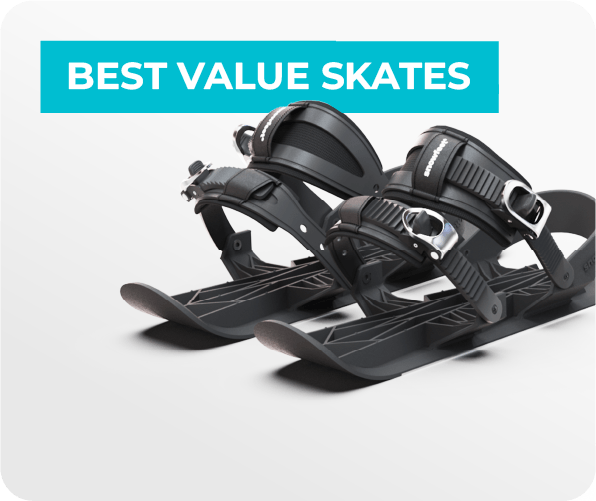



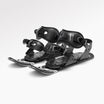
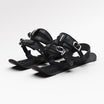
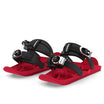
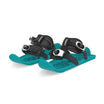

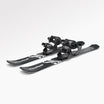

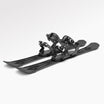
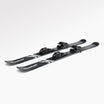






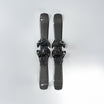
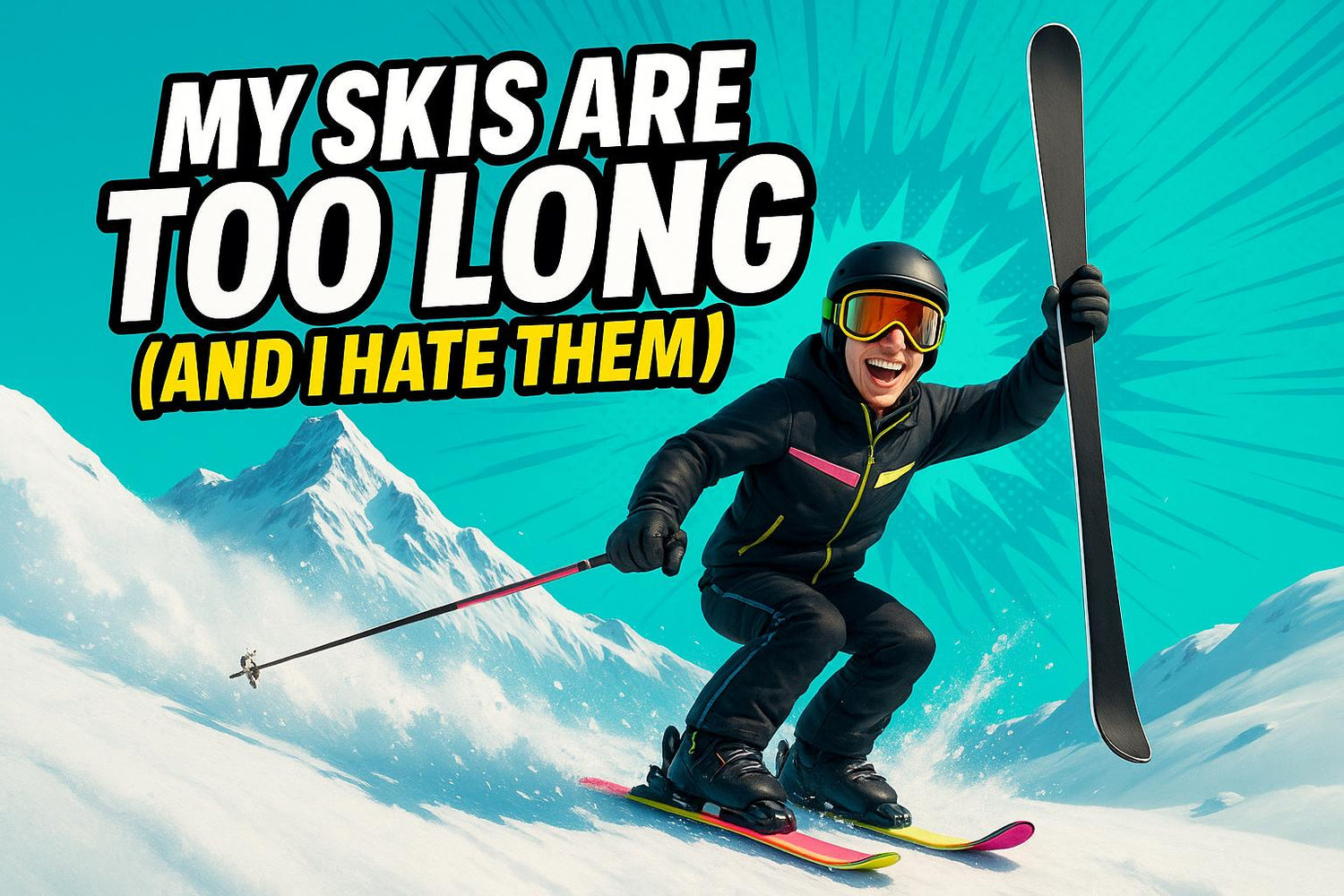
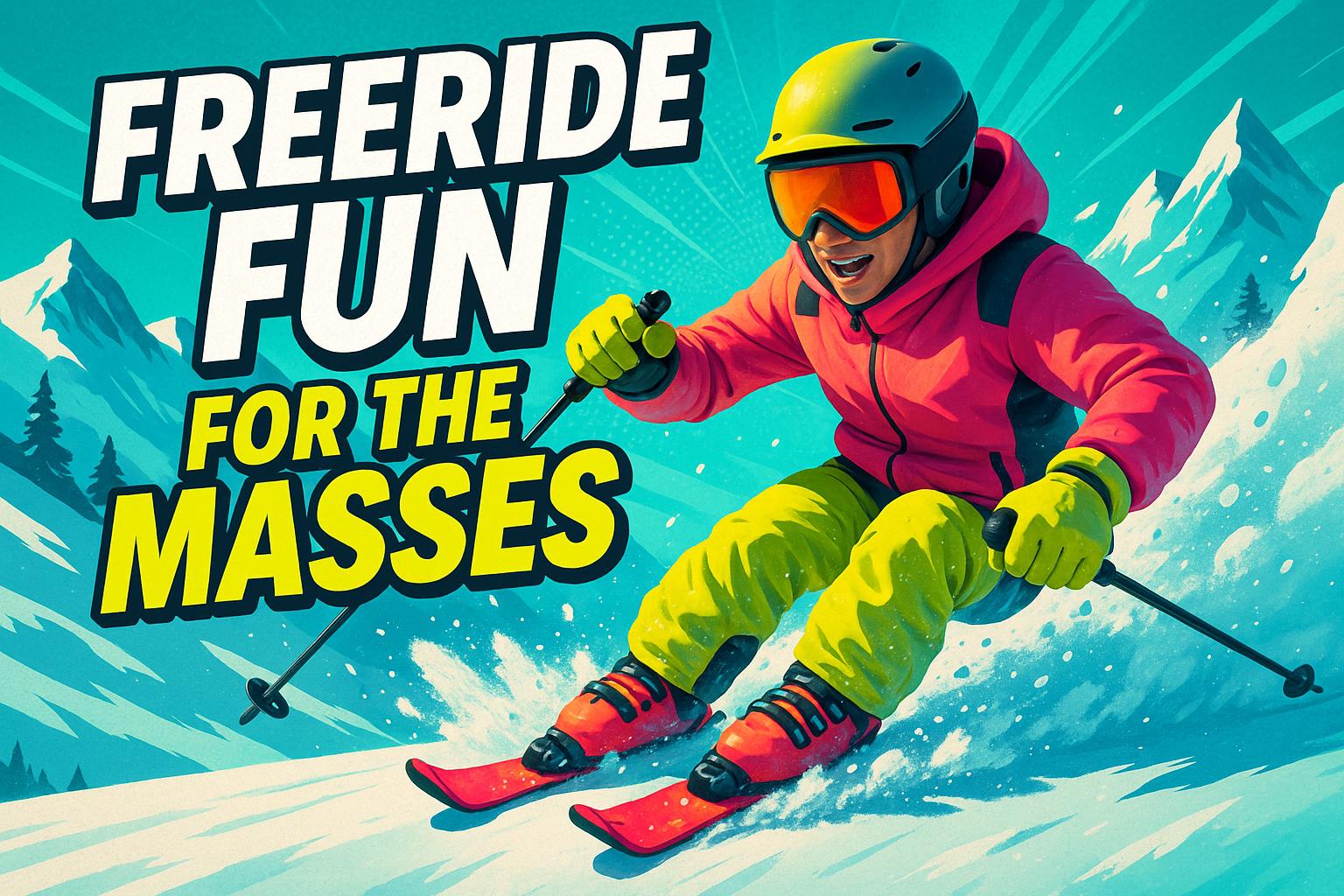
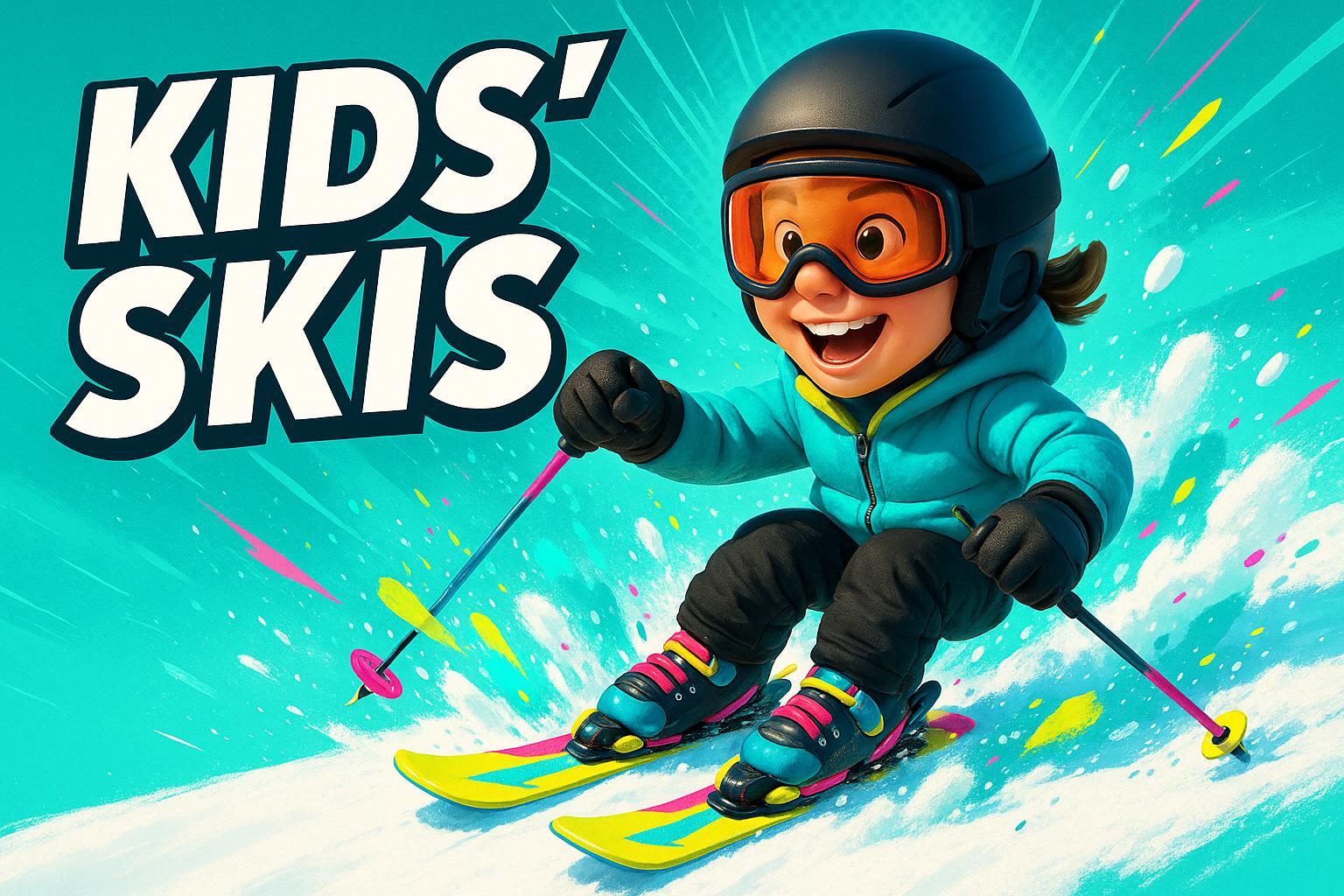
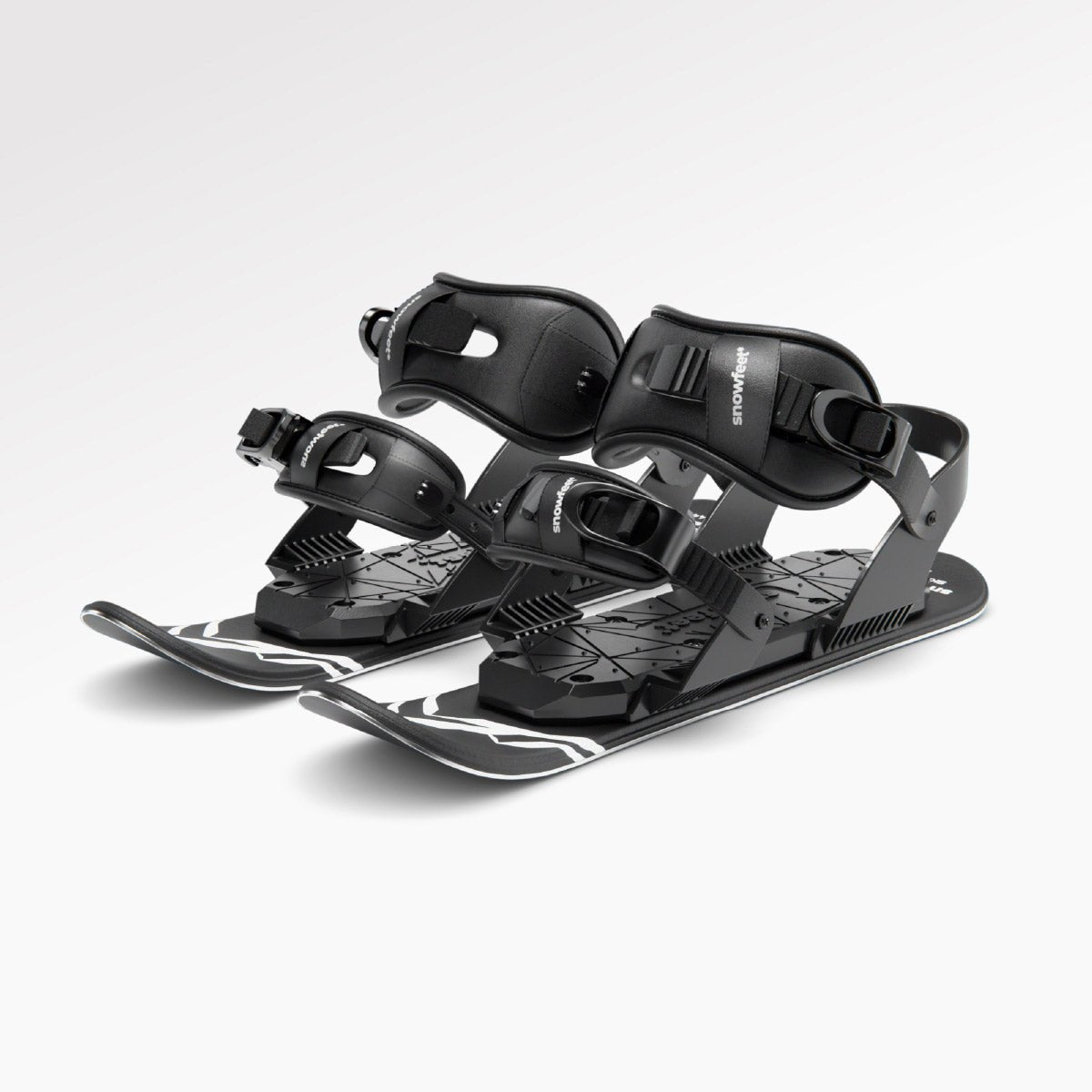
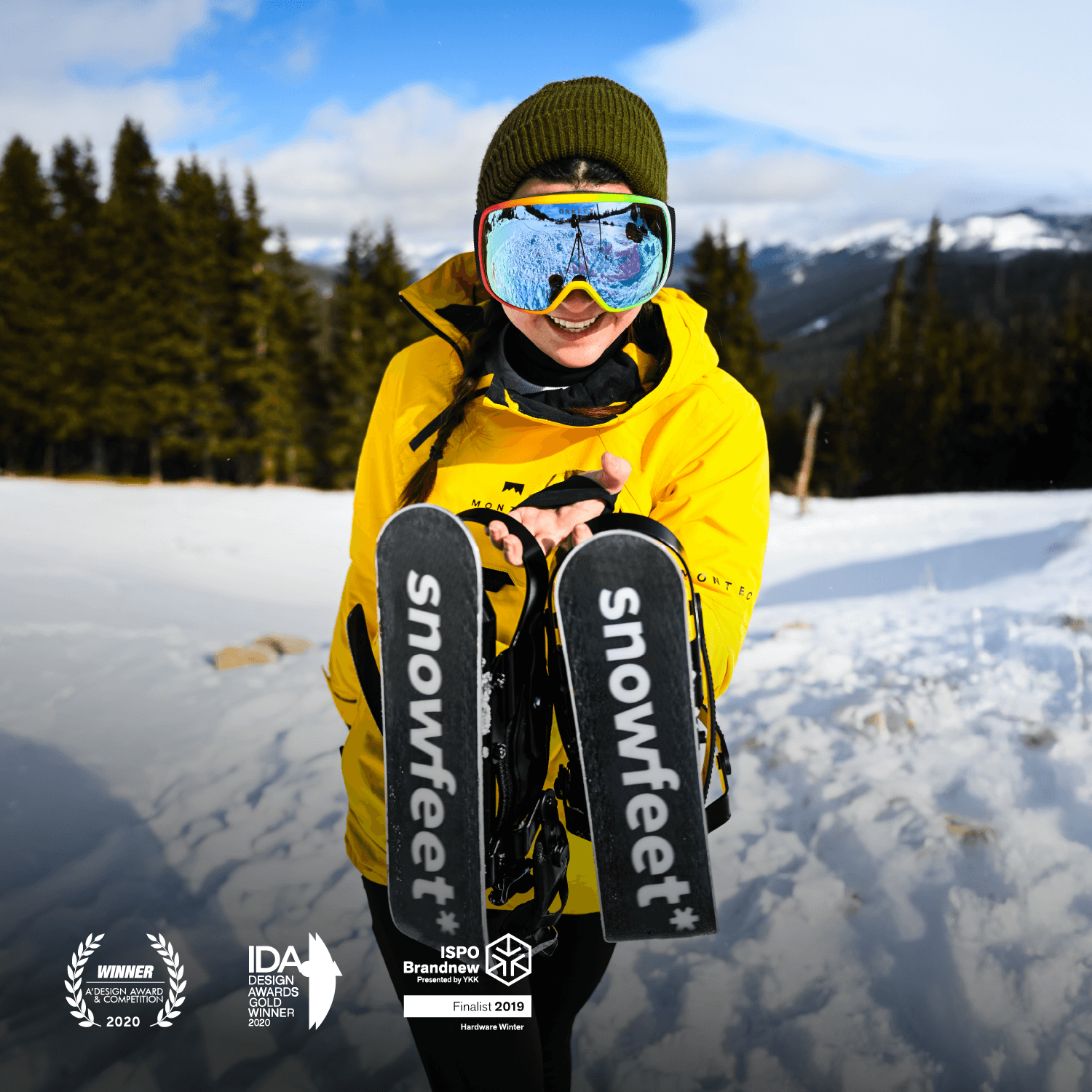
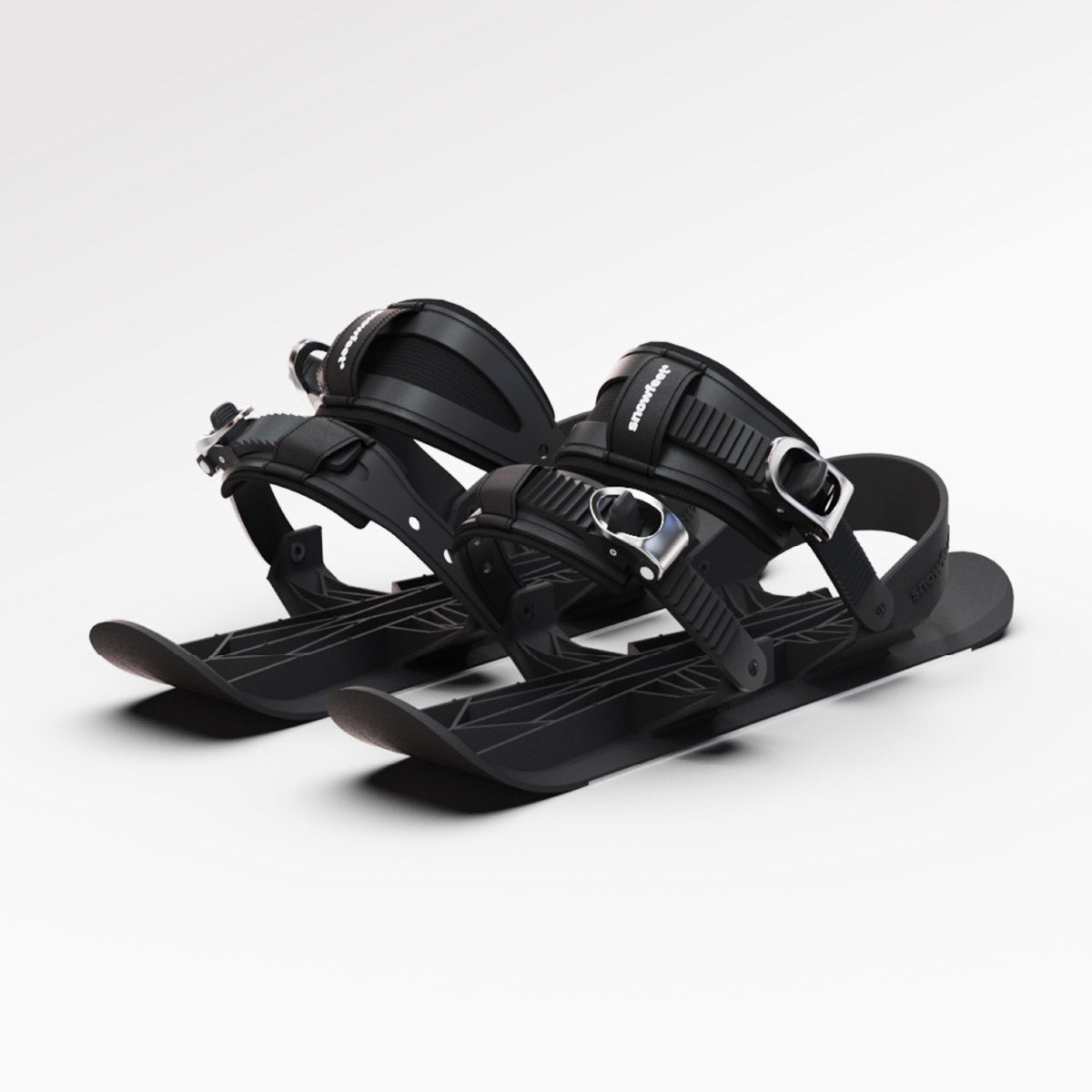

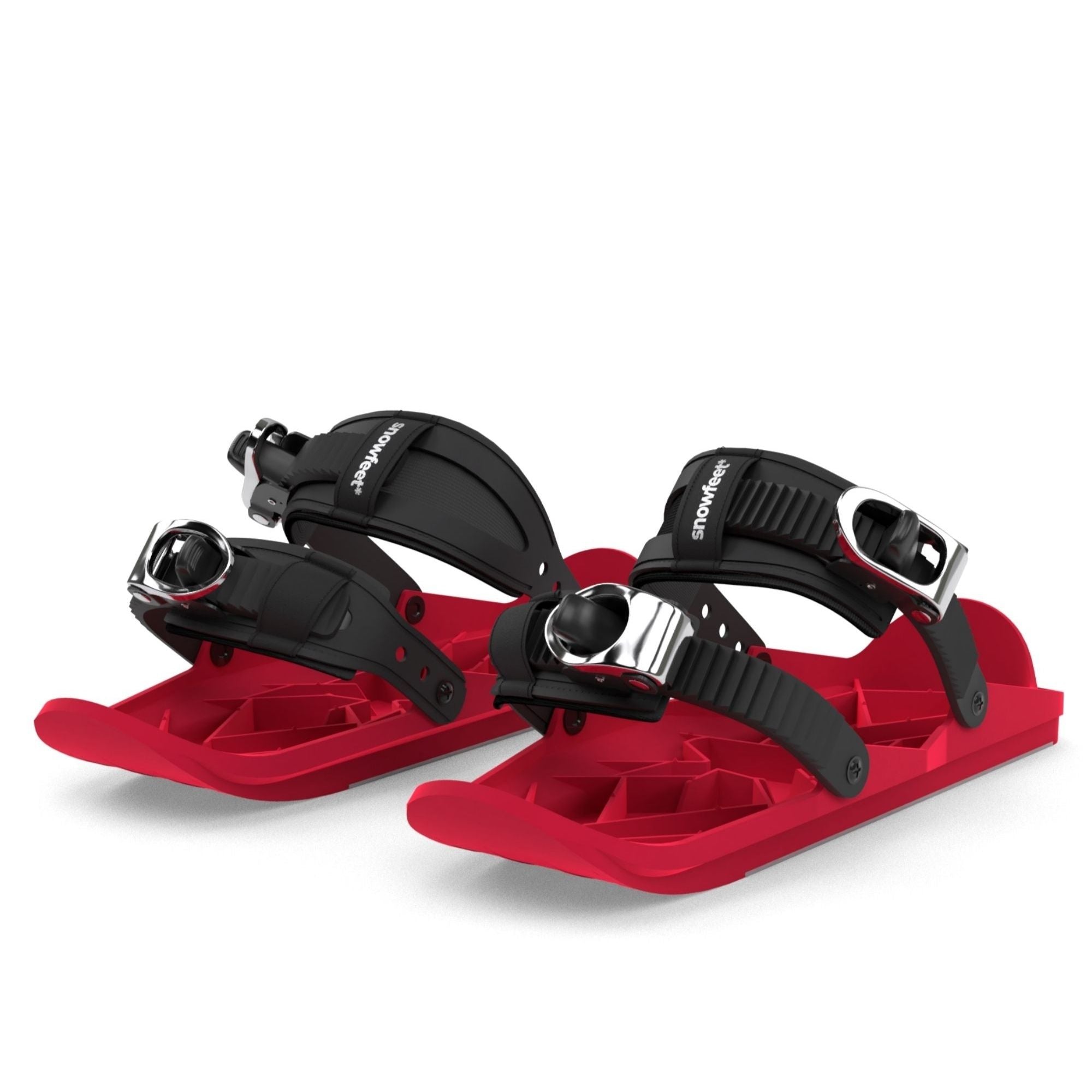
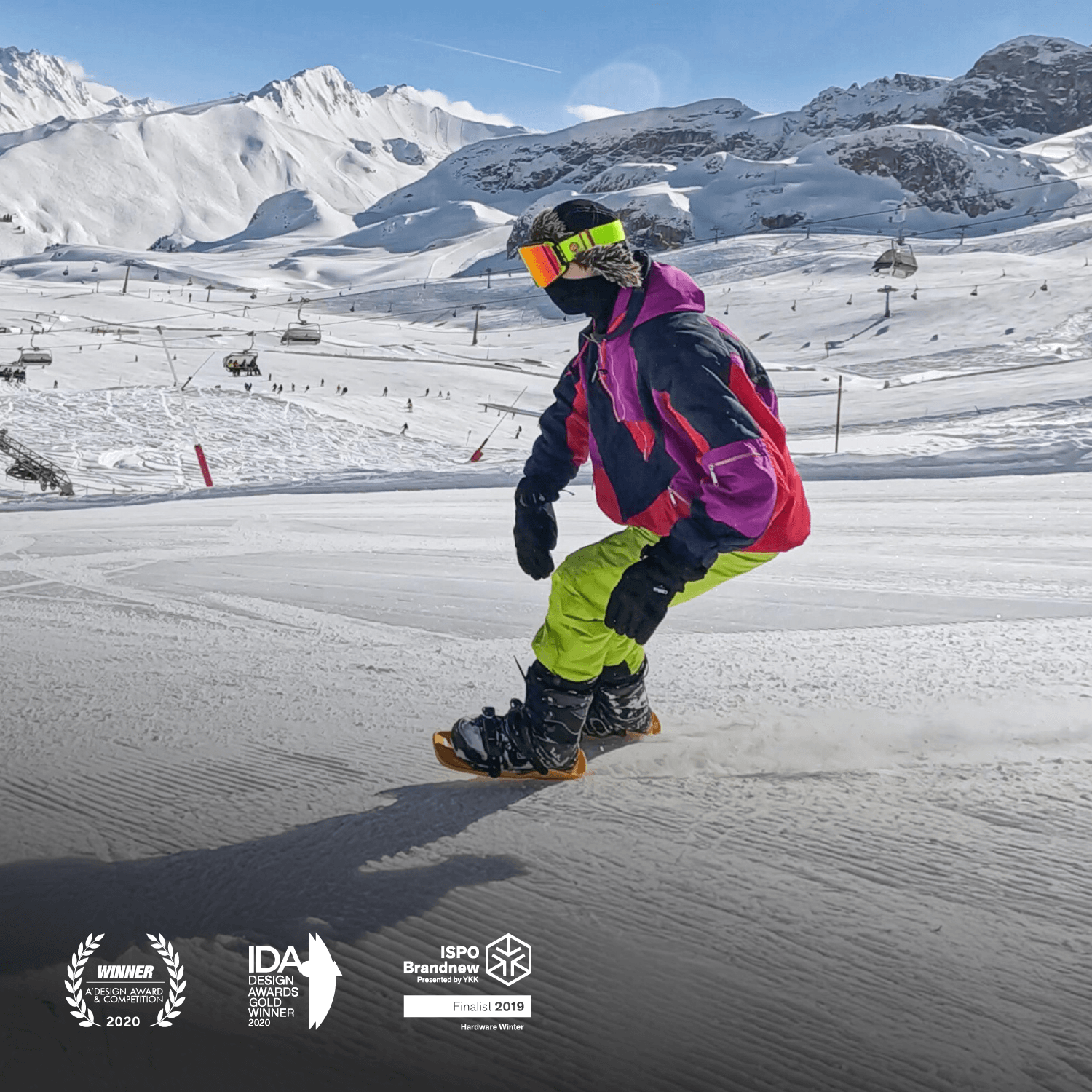


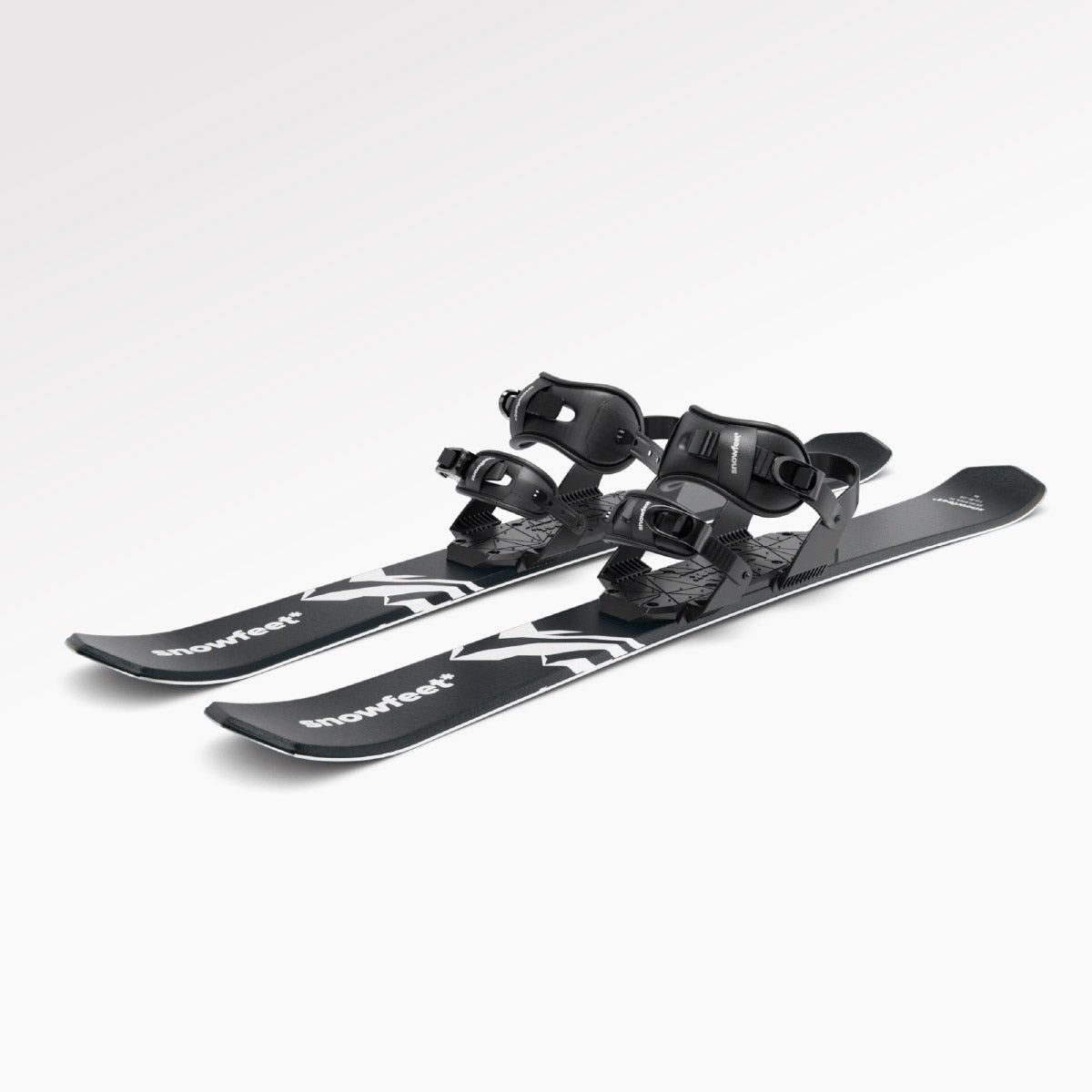
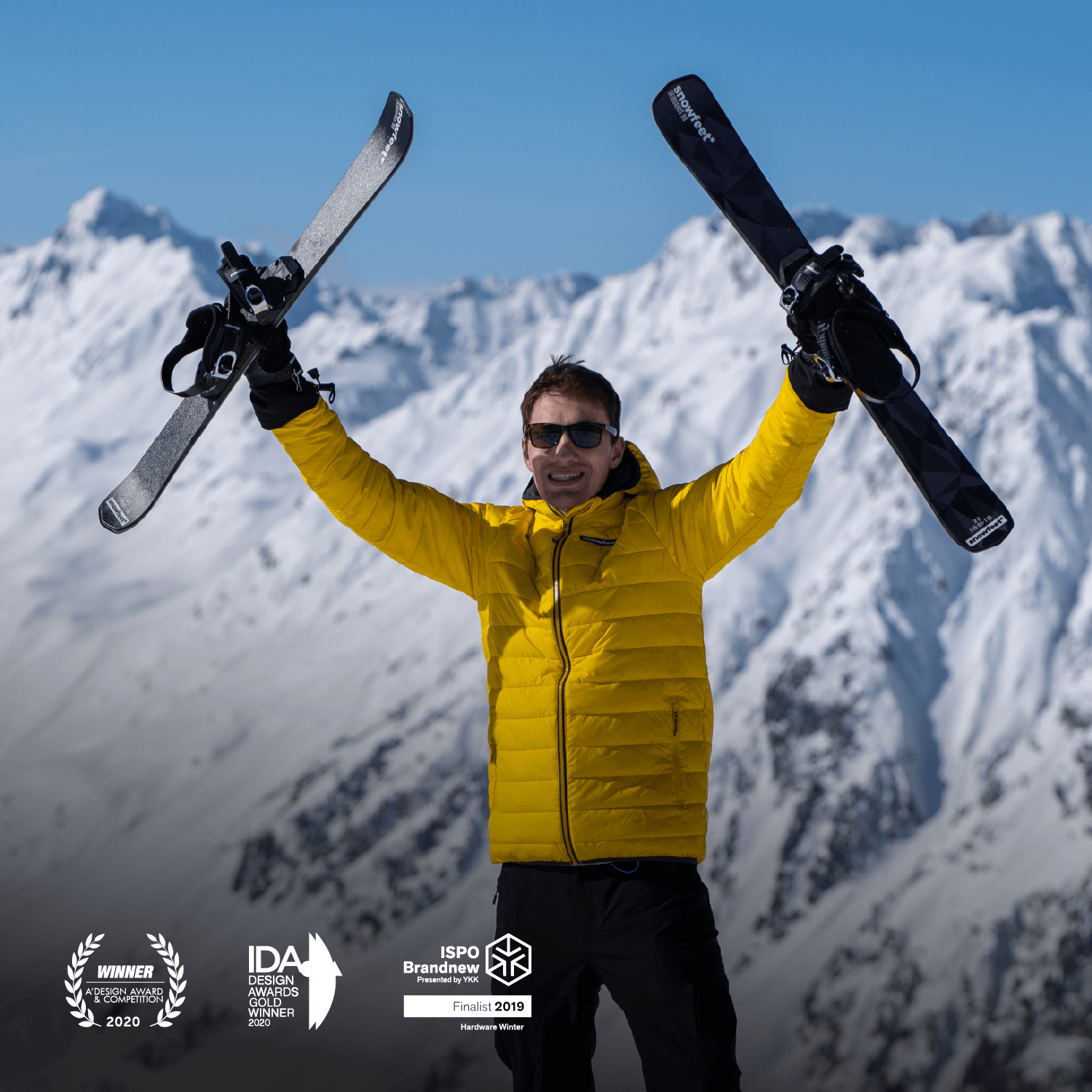
Leave a comment
This site is protected by hCaptcha and the hCaptcha Privacy Policy and Terms of Service apply.